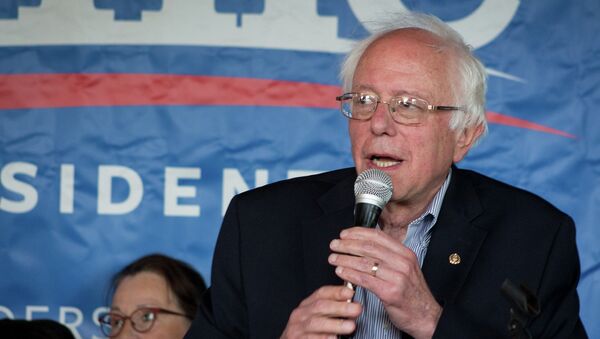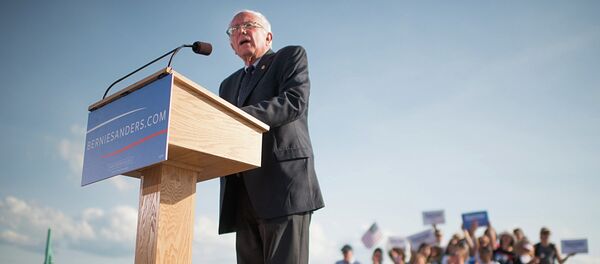The poll from Suffolk University shows that Sanders, the long-serving senator from Vermont, is getting 31% of support from likely Democratic voters, compared to Clinton's 41%, in the state where the first key primary will be held in eight months' time.
Hillary Clinton's nomination has been treated as a forgone conclusion, and she started out with an unsurprisingly large lead among the relatively small field of democratic candidates.
Sanders, who has served in the Senate as an Independent but declared his candidacy in the 2016 race as a Democrat, has had to defend himself as a legitimate candidate, and not simply someone running to force Clinton, and the political discussions of the campaign, to the left.
"Most political observers felt that Hillary Clinton’s large early lead among Democratic voters would eventually shrunk a bit over time," said David Paleologos, director of the Suffolk University Political Research Center in Boston. "But in New Hampshire right now, the lead has shrunk a lot, and this is a much different Democratic primary race than we are seeing in other states so far."
Clinton still has much stronger support among women, however, who favor her 47% to 28%, and Sanders polls better among men at 35% to 32%.
Clinton was also stronger among self-identified moderates — whom she carries at 46% to 26%, whereas among those who call themselves liberals — it's a dead heat, tied at 39%.
Perhaps most tellingly is the difference in polling between those who say they are familiar with both candidates and those who don't. Among the former, Clinton's 10-point lead shrinks to 38% to 35%.
"This signals that Clinton is leading because more voters have never heard of Sanders," said Paleologos.
But Sanders' candidacy is more recent, and this could mean, that, as voters are becoming more familiar with him, they like what they see.
As for other possible Democrats in the field, the poll found Vice President Joe Biden garnered 7% of likely Democratic voters, former Maryland Gov. Martin O'Malley got 3% and former Rhode Island Gov. Lincoln Chafee and former Virginia Sen. Jim Webb tied with 1%.
The poll does just concentrate on the tiny, yet influential state of New Hampshire, and Sanders may have an advantage in that he has been a long time political figure next door in Vermont. Sanders may also find it difficult to fare so well in larger states with more racially and culturally diverse populations. Vermont is 94% white, 96% American-born, and skews towards a more highly educated demographic as well.
The Suffolk poll comes on the heels of another, published Monday, which put Clinton and Sanders at 44% and 32% respectively.
— Bill McKibben (@billmckibben) June 15, 2015
A straw poll in Wisconsin — where Sanders' strong pro-labor stance may resonate well — also found Sanders coming in closer than expected - at 41% to Clinton's 49%.
— Dave Kempa (@kempadimes) June 8, 2015
Sanders also expressed surprise recently at the size of the crowds he has been drawing so far on his campaign stops.
"If you were to ask me a couple of months ago whether we would have larger crowds than any other candidate out there, I would not have told you that that would be the case," he told NPR, describing his reaction to a 5,000-person crowd in Minnesota.
"Stunned. Stunned. I mean I had to fight my way to get into the room. Standing room only. Minneapolis was literally beyond belief."
— John Nichols (@NicholsUprising) June 14, 2015
In national polls, however, Clinton still clearly leads over all others in the Democratic field, with Sanders the only competitor making it into double digits, but generally still being held to the teens.
— Gabriel Debenedetti (@gdebenedetti) May 28, 2015
— John Wagner (@WPJohnWagner) June 2, 2015




